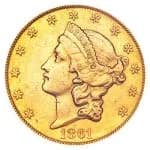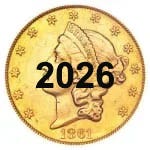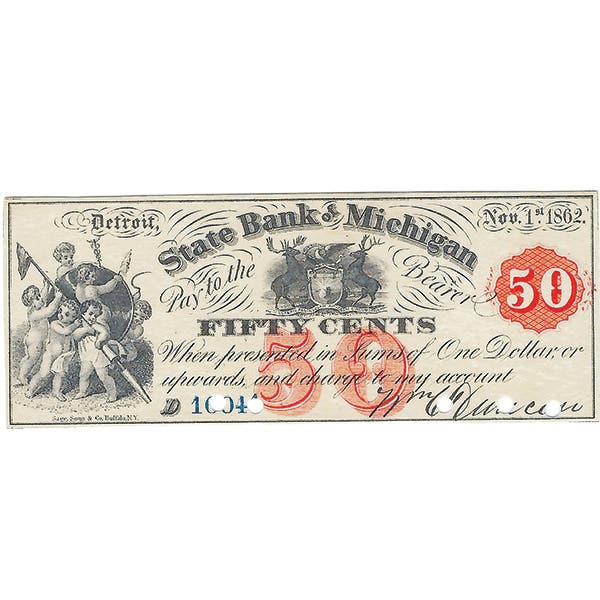Hotz off the Press: Red Seals and Ruins in Texas
Exploring Toyah and Goree, Texas—two near-ghost towns scorched by time and West Texas heat.
Heat waves are setting records across the United States this summer, with sweltering temperatures affecting all parts of the country, including where I live on the East Coast. When it gets this hot, I think of Central and West Texas, where the heat beats down for days or weeks at a time. Accordingly, this seemed like an impetus to take a look at a couple of almost abandoned and ghost towns in the state to see what is left of its national banks. This month, we will explore the forlorn towns of Toyah and Goree, Texas.
Toyah, Texas
Toyah, Texas, is pretty much as far off the beaten path as a place could be. It is located in Reeves County, about fifteen miles east of Pecos and 80 miles north of Marfa. Despite its remote location, Toyah is just off Interstate 20 at Farm to Market Road 2083.
Toyah is listed among Texas ghost towns with good reason. Although the town once boomed in its heyday, sometime around 1910, with a population of over 1,000 people, it has consistently declined, and just 53 people reside there today.
The name Toyah is said to have come from an Indian word meaning “flowing water.” Several artesian springs found in the area may have also inspired the name. Toyah is Reeves County’s oldest townsite, having begun as a trading post and gathering spot for the owners and employees of the large ranches that surrounded the site, where storekeeper W. T. Youngblood peddled his wares to the ranches before building an adobe store. Then things changed drastically upon the arrival of the Texas and Pacific Railway in 1881; a post office opened, and the town was included on the Overland Stage Company (service to Ft. Davis and Fort Stockton) that same year.
By the mid-1880s, the town had a sizeable hotel (The Youngblood Hotel) to complement the saloons and restaurants that were operating. It wasn’t until 1894 that the city opened its first school. By 1910, the town had a reported population of 771, and its importance as a railroad stop had increased. It became a changing point for railroad crews and hosted a busy spur for shipping cattle. But nothing lasts forever, and after a few years, a new shipping point named Toyahvale was built, adding insult to injury by including the first town’s name into its own.
Toyah’s residents numbered nearly 1,100 by 1914. It maintained that number up through the crash of 1929. Two years later, Toyah’s population was reduced by nearly half. At its high-water mark, Toyah had four stores, two banks, four churches, and two rival hotels. By the 1940s, the town had declined to 464, and in the 1950s, it was hovering just over 400. Another decline brought it to less than 200 in the 1970s. A tornado on July 17, 2004, largely destroyed the town, demolishing most of the buildings on its main street and leaving scattered ruins throughout the townsite.
On October 25, 1906, a Black man in Toyah named J.I. “Slab” Pitts was dragged to death and then hanged for living with his white wife, Eva Ruff. In September 1928, Amelia Earhart made an unscheduled five-day stop to adjust her carburetor. She related in her journal that she landed in a small town near Pecos, Texas. However, according to a regional book, “The Toyah Taproots,” several local, unnamed youngsters pictured around her airplane were later identified as being from Toyah.
In September 1906, the First National Bank of Toyah, Texas, received charter #8355 and opened for business. This was a relatively short-lived affair as the bank liquidated in December 1912, having issued just 288 sheets of “Series of 1902” red seals and 488 sheets of “Series of 1902” date back blue seals for a total issue of just $36,500. I wish I could provide you with a photo of a note from Toyah, but none are known, and given the early close and limited circulation, it would be a miracle if one were to turn up.
A visit to Toyah today would be a ghost town hunter’s dream. The main street, once lined with impressive brick buildings, is hardly recognizable today. The First National Bank building, erected in 1909, stood at the end of a series of buildings, including the Youngblood Hotel and the city hall. The bank was a two-story edifice with white concrete columns in front. The main street had quite a few abandoned buildings in 2000, but they were all destroyed in the 2004 tornado. Only the ruins of the bank remain today.
The only other significant structure remaining in Toyah is the high school, built in 1912. It is an amazingly large building, given how small the town has become. When it was constructed, the town residents expected Toyah to continue growing from its 1,000 population at the time. The building is abandoned but in good condition.
Toyah has no functioning businesses, though there is a church in good condition and a post office, which appears to have been closed. A couple of streets of small but occupied homes house people who work in the nearby wildcat oilfields. I found some excellent photos of Toyah, as it appeared before the tornado, but the images were too small to reproduce in this article. I urge you to visit the website texasescapes.com for some excellent photos of Toyah.
Goree, Texas
Our next stop is Goree, Texas, a small town in Knox County. It is located about 84 miles north of Abilene and 71 miles southwest of Wichita Falls, at the junction of U.S. Route 277 and State Route 266.
Settlers began moving to the area around 1886, and by 1887, a settlement had formed around a store and post office built by Bill Benedict. The post office was originally named Riley Springs and was later renamed Goree by J. W. McLendon after Confederate veteran and Knox County pioneer Robert D. Goree. McLendon purchased Benedict’s store in 1890 and relocated it, along with the post office, to a new site. A school was built near the relocated store in 1901.
The site was known as North Goree until 1904, when Graves Cayce established a post office, and the community’s name was changed to Hefner. In 1905, it was found that a railroad would be built through the present site of Goree. Plans were made to establish a town, and the citizens began raising funds to attract the Wichita Valley Railroad. The track was completed in 1906, the same year Goree was incorporated, and the Goree school moved to the new townsite and was renamed Chigger Hill School. Also in 1906, J. L. Norris and Red Price built their cotton gin at Goree. The gin burned in 1917 but was rebuilt and operated from 1922 to 1964.
Goree had a population of 614 in 1920 and only 425 in 1940, when it had 35 businesses. Afterward, Goree declined in both businesses and population. The town, which is centered in a productive farming area raising chiefly cotton, maize, and wheat, had six businesses and a population of 524 in 1980 and 412 in 1990. By 2023, the population had fallen to 154, and what few companies that had remained in Goree’s business district (North 5th Street) closed.
The First National Bank of Goree opened under charter #8200 in 1906. Its substantial corner building was erected that same year on the corner of West Oak Street and North 5th Street. Although the bank operated for many years until it liquidated in 1932, it was a very small affair, issuing a smattering of “Series of 1902” red seal, date back, and plain back blue seals, and “Series of 1929” small notes for a total circulation of just around $122,000. This was one of our classic “$6,250” banks, circulating the smallest amount allowed, and as such, its notes are very rare. Just two large notes are known (no small notes have been reported), and I have included a photograph of one that was recently sold at auction.
Goree today has a remaining business district that consists mostly of abandoned buildings on just one side of North 5th Street. From current photos, it appears that just a small bar and the U.S. post office are still open. The 1906 First National Bank building still stands, but it is unclear if it is in use or not. There are some well-kept homes and a tidy white clapboard church in town. The ghostly nature of the remaining buildings, with some in ruins, makes for a most picturesque scene.
Readers may address questions or comments about this article or national bank notes to Mark Hotz at markbhotz@gmail.com.
You may also like:









